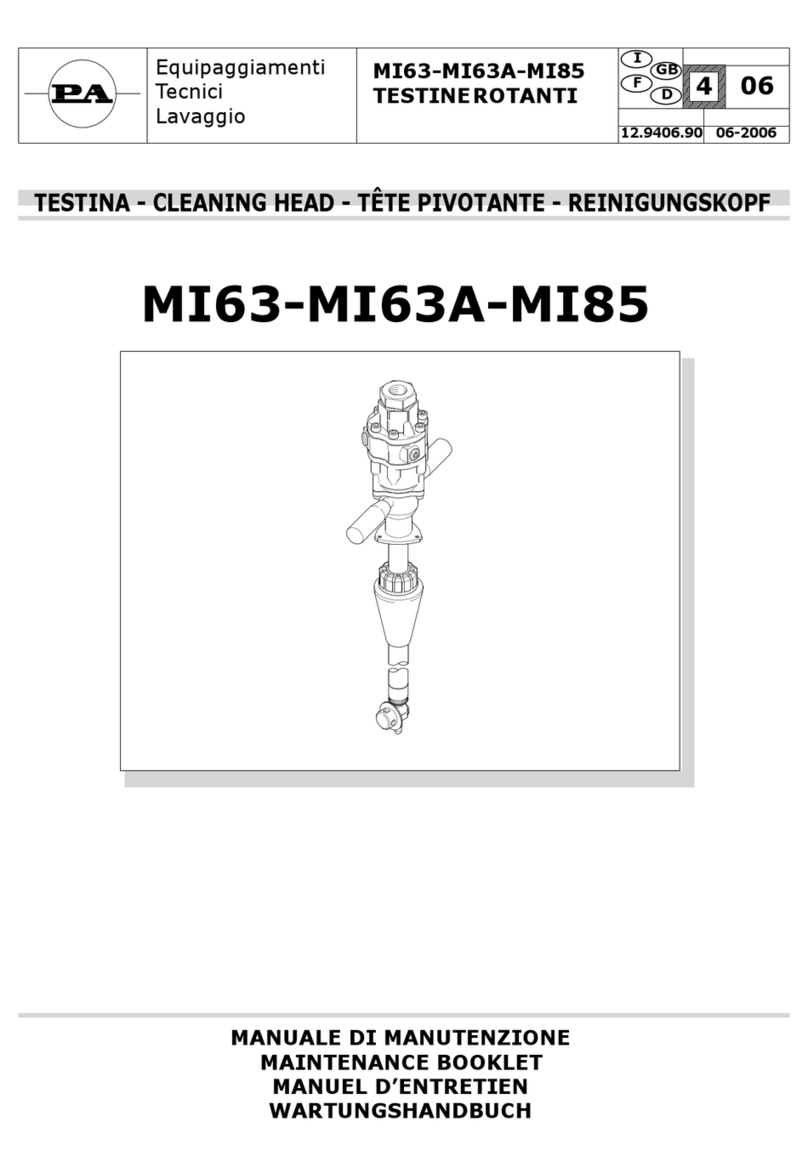
ITALIANOENGLISHFRANÇAISDEUTSCH
6
ITALIANO ENGLISH FRANÇAIS DEUTSCH
7
M Staccare l’impianto elettrico dal motore togliendo le due spine (A in g.3) facendo attenzione a non
danneggiare le induttanze situate appena sopra. Per precauzione si possono utilizzare due pinze a
punta.
@ Se necessario, con una chiave esagonale maschio di 3 mm smontare dal motore la angia e la
guarnizione (g.4).
I Vericare l’integrità della guarnizione tra il motore e la angia.
I Vericare l’integrità della spina sull’albero del motore. Se da sostituire smontarla spingendola fuori
dalla sua sede con un cacciaspine.
Démontage/Vérication Ausbau/Überprüfung
MDisconnect the electrical circuit from the motor by removing the two plugs (A, g.3), being care-
ful not to damage the inductors positioned just above. As a precaution two pointed pliers can be
used.
@ If necessary, use a 3 mm hexagonal male wrench to dismount the ange and the gasket from the
motor (g. 4).
I Check that the gasket between the motor and the ange is intact.
I Check that the pin on the motor shaft is intact. If it has to be replaced dismount it by pushing it out
of its seat with a pin-remover.
MDéconnecter l’installation électrique du moteur, en enlevant les deux ches (A, gure 3), en veil-
lant à ne pas endommager les inductances situées juste au-dessus. Par précaution, il est possi-
ble de se servir de deux pinces à bec.
@ Si besoin est, avec une clef six-pans mâle de 3 mm, démonter du moteur la bride et la garniture
(g. 4).
I Vérier l’intégrité de la garniture entre le moteur et la bride.
I Contrôler l’intégrité de la che sur l’arbre du moteur. S’il faut la changer, la démonter en la pous-
sant en dehors de son logement à l’aide d’un chasse-goupilles.
MDie elektrische Anlage vom Motor abklemmen, indem die beiden Stecker gelöst werden (A auf
Abb.2); dabei darauf achten, dass die Widerstände nicht beschädigt werden, die sich unmittelbar
darüber benden. Zur Vorsicht können zwei spitzen Zangen verwendet werden.
@ Falls erforderlich mit einem Innensechskantschlüssel zu 3 mm den Flansch und die Dichtung vom
Motor abbauen (Abb.4).
I Die Unversehrtheit der Dichtung zwischen Motor und Flansch überprüfen.
I Die Unversehrtheit des Stifts der Motorwelle überprüfen. Zum Ausbauen mit einem Bolzentreiber
aus seinem Sitz drücken, falls er ersetzt werden muss.
3 4
AA





























